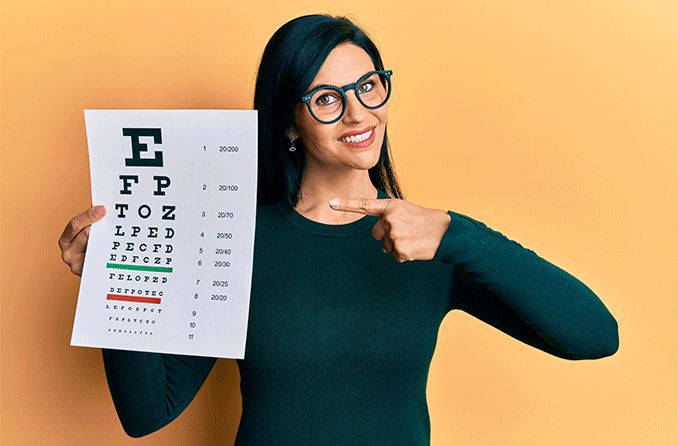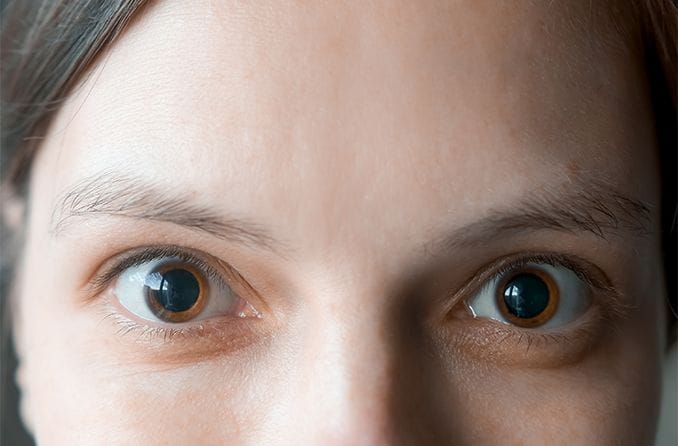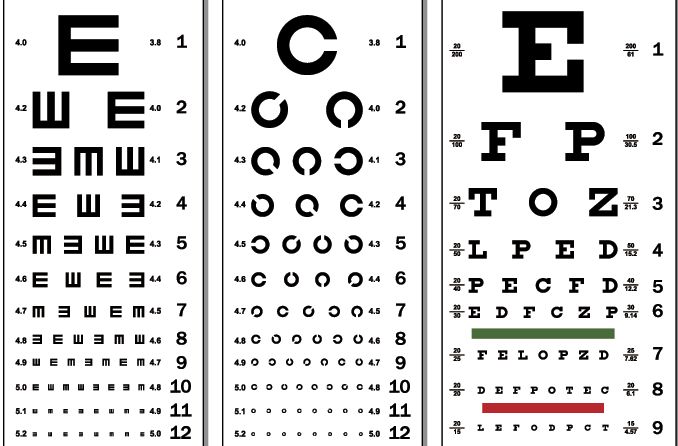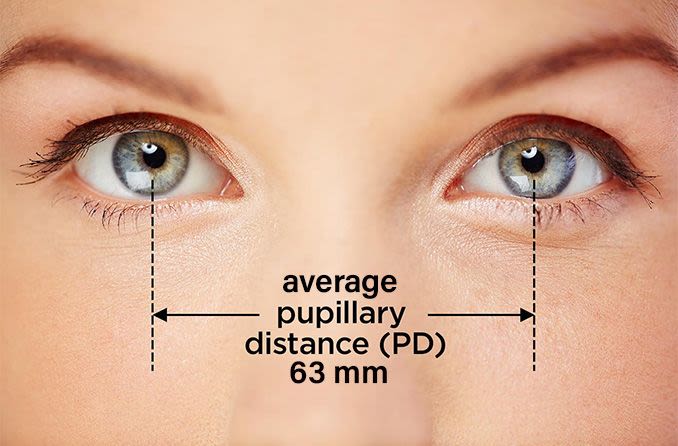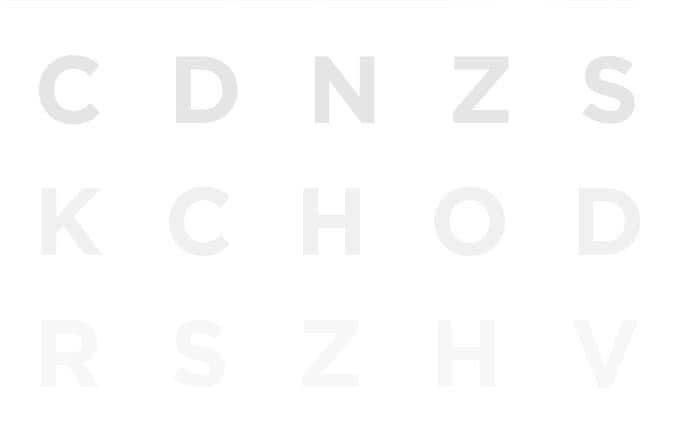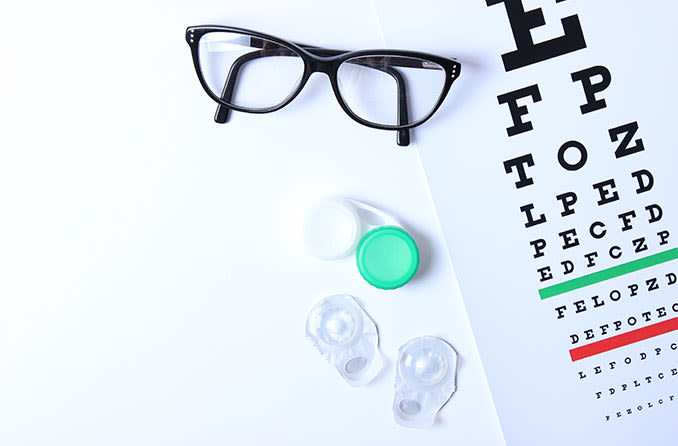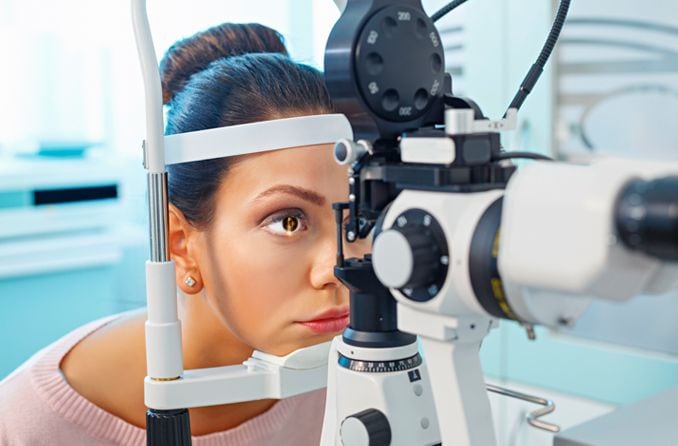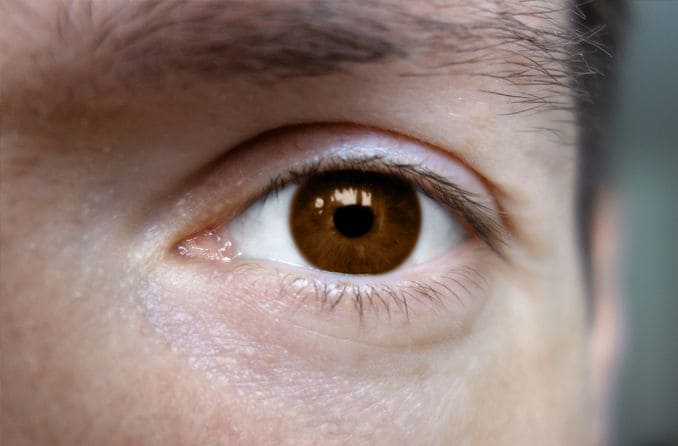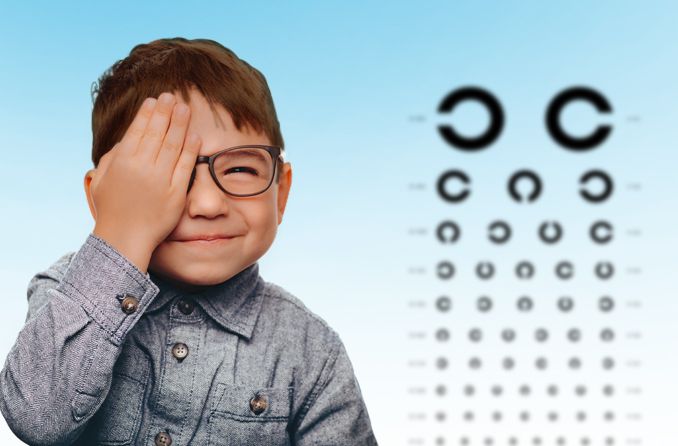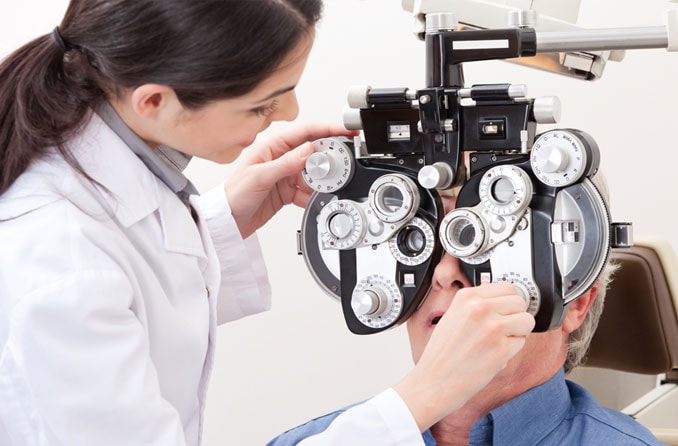The Snellen eye chart is the most common method used by eye doctors to measure visual acuity, which is how clearly a person can see. During an eye exam, patients will read the Snellen chart from 20 feet away. The farther down the chart the patient can read, the better their visual acuity is.
What is the Snellen chart?
The Snellen chart is an eye chart that measures a person’s vision by how well they can read and see detail. Dr. Herman Snellen, a Dutch eye doctor, created the eye chart in 1862 for his colleague, Dr. Franciscus Donders. Dr. Donders conducted eye exams by having people look at a chart on the wall and describe what they could see.
Dr. Snellen created his chart using a geometric scale that gives an exact measurement of a person's visual acuity. The chart has 11 lines of capitalized block letters, known as optotypes.
At the top of the chart is only one letter — a large “E.” As you move down the rows of the chart, the letters gradually get smaller.
The chart provided a standard for eye doctors to use when measuring a patient’s eyesight. More than 100 years after its invention, the Snellen chart is still being used by eye doctors around the world.
SEE RELATED: Test your vision with 3 different eye charts
How the Snellen chart works
To use the Snellen chart, stand 20 feet away and read the rows of letters, starting at the top and working your way to the bottom. Do this while covering one eye and reading the chart with your uncovered eye. When you finish with one eye, restart the test with your other eye uncovered.
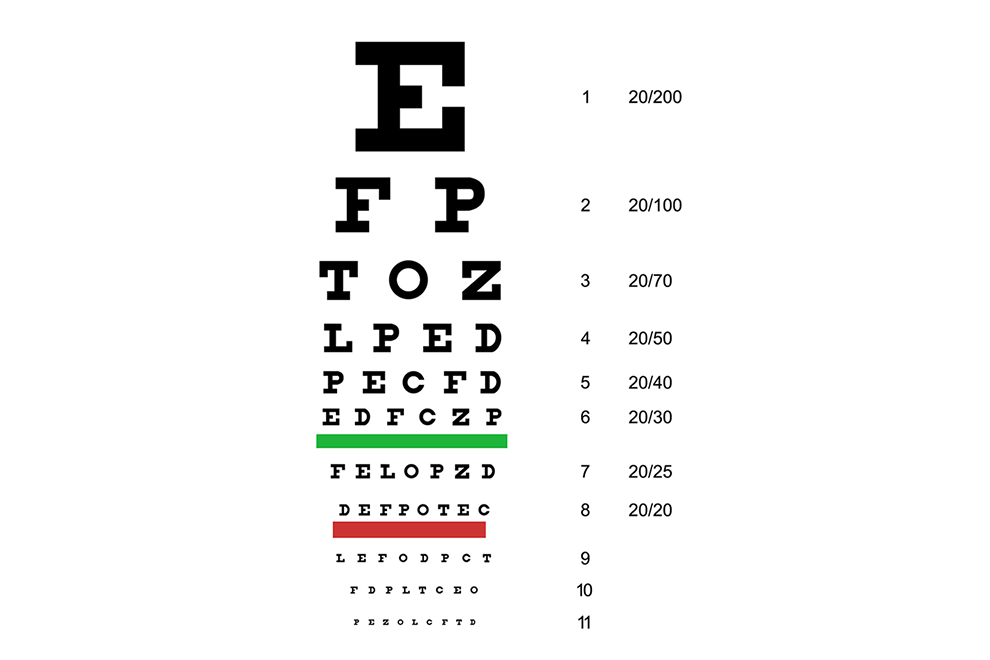
Each row of the Snellen chart represents a level of visual acuity, which is based on two numbers. The first number describes the Snellen chart’s distance from the patient. In the U.S., this number will almost always be 20 to represent 20 feet of distance. Countries that use the metric system will normally use the number 6 to represent a distance of 6 meters.
The second number describes how clearly a person can read a line of the Snellen chart from 20 feet away. For example, if someone has 20/20 vision, or “normal” vision, it means they can clearly read a line from 20 feet away that the average person could.
If someone has 20/50 vision, it means they have to be 20 feet away to read a line from the chart that someone with “normal” vision could read from 50 feet away.
The Snellen chart makes it easy for eye doctors to prescribe corrective lenses and restore sharp vision.
Printable Snellen eye chart
Because it’s so quick and easy to use, the Snellen chart makes it possible to assess your visual acuity from the comfort of your home.
Download this printable Snellen chart to do your own vision screening. Just print the chart, hang it up on a wall, measure the proper distance from it and start reading.
Note: The size of the chart was adjusted for printing purposes, so you should place it 10 feet away from you rather than 20.
Using a Snellen chart at home can give you an idea of your visual acuity, but it does not replace an actual eye exam. You should still schedule regular eye exams to make sure your eyesight and eye health are in good shape.
READ MORE: Nearsighted vs. farsighted vision
